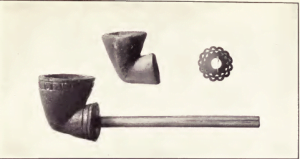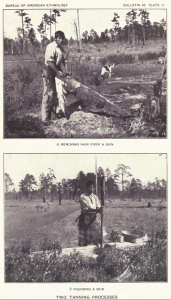Choctaw Death and Burial Practices
There appears to have been very little lamenting or mourning on the occasion of a death or a burial. The body was borne to the grave and the interment took place without a ceremony of any sort. In the event of the death of a man of great importance, however, the body was allowed to remain in state for a day before burial. During that time it was decorated with various ornaments and garments, but these were removed before interment. Such objects are said to have been preserved and handed down from one generation to the next, and used whenever … Read more



